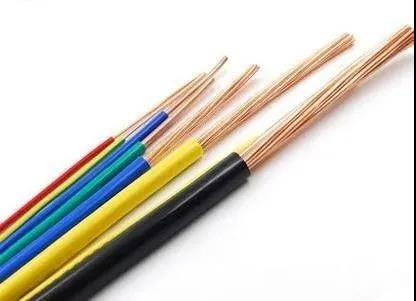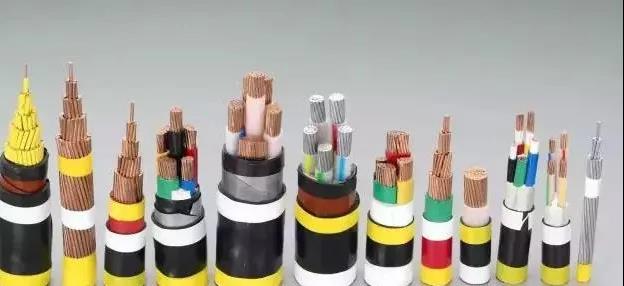1. Shielded cable technical characteristics
With the increase in the capacity of the power system and the continuous improvement of the level of automation, the secondary equipment of the power system has now widely used integrated circuit or micro-type protection devices. The application of these protection devices is very useful to improve the stable operation of the system. of. But correspondingly, some new problems have been raised. For example, because the microcomputer protection device is composed of electronic components and single-chip microcomputers, and it runs in a high-voltage environment, there is a problem of how to resist electromagnetic interference. However, it is not obvious that the previous conventional electromagnetic protection devices are affected by this aspect.
Therefore, in the high-voltage substation, all currents, voltages and DC trips used to connect the relay protection equipment in the control room from the switch field may introduce interference voltage from the switch field to the secondary circuit of the relay protection based on microelectronic devices. , Should use shielded control cables. In the high-voltage substation, shielded cables are used to suppress electromagnetic interference. How to properly ground the shielding layer plays an important role in reducing the interference level of the external electromagnetic field to the secondary equipment of the microcomputer.
The magnetic flux generated by the interference source of the shielded cable and the current in the outer wire is represented by dashed concentric circles. A part of these magnetic fluxes surrounds the shielded cable core and its shielding layer (it can be approximated as the magnetic fluxes surrounding the two are equal), which is called interference Magnetic flux, as shown in Figure 1(a). It induces an electric potential Es(.) in the cable core and the shielding layer, and produces the shielding layer current Is(.), as shown in Figure 1(b). The potential Es(.) is equal to the voltage drop of the shielding layer current on the shielding layer resistance Rs and self-inductance Xs, namely: Es(.)= Is(.)Rs+jIs(.)Xs
The magnetic flux generated by the shielding layer current surrounds the shielding layer and all overhead cable cores. These magnetic fluxes are opposite to the interference magnetic flux generated by the outer conductors, so they are called reverse magnetic fluxes, as shown in Figure 1(a) Concentric circles are indicated by solid lines. According to the principle of electromagnetic induction, under ideal circumstances, if the shielding layer resistance is zero, this reverse magnetic flux can cancel all the interfering magnetic flux, that is, the mutual electromotive force Er(.) and the reverse magnetic flux generated in the cable core. The electromotive force Es(.) induced by the interference magnetic flux in the cable core is equal in magnitude and opposite in direction. Suppose the mutual inductance of the shielding layer to the cable core is Xm, then: Er(.)=-jIs(.)Xm
Because the shielding layer completely surrounds the cable core, Xm=Xs. It can be seen from the above formula that if the shielding layer resistance Rs=0, then Es(.)=- Er(.). However, the shielding layer cannot be without resistance, so the part of the electromotive force induced in the cable core by the interference magnetic flux that cannot be cancelled is Es(.) + Er(.) = Is(.) Rs, which is proportional to the resistance of the shielding layer. Therefore, in order to effectively eliminate the interference of electromagnetic coupling, it is necessary to use materials with small resistivity such as copper and aluminum to make the shielding layer.
2. Grounding of shielded cables
Shielded cables have poor balance characteristics, so good shielding integrity and good grounding are very important for shielded cables. Shielding grounding is the grounding of shielding equipment to prevent electrical equipment from being affected by electromagnetic interference, affecting its work or causing electromagnetic interference to other equipment.
The use of shielded control cables, and the shielding layer is grounded at both ends of the switchyard and the control room at the same time, is an effective secondary loop anti-electromagnetic interference measure used internationally. In the document “Selection and Installation of Control and Low-Voltage Cable System in Substations” proposed by the working group of the IEEE Substation Special Committee and the Relay Environment Subcommittee, there is a special section “Metal Shielding Capability of Control Cables” “Reducing induced transient voltage” talks about related issues: “It is recommended that shielded cables should be grounded at both ends. The integrity of the shield must be particularly maintained. Disconnecting or separating the shield will greatly reduce the shielding efficiency; if the shield is grounded at only one end, The foreskin on the non-grounded end may have a very high transient voltage to the ground.”

The advantages of grounding both ends of the shielding layer of the control shielded cable are:
① When the control cable is surrounded by the magnetic flux generated by the busbar transient current, the shielding current will be induced in the cable shielding layer. The magnetic flux generated by the shielding current will offset the magnetic flux generated by the busbar transient current to the cable core. The influence of the line. Assuming that the shielding effect is ideal, the result of the two interactions will make the magnetic flux in the cable core completely surrounded by the shielding layer to be zero, and the shielding layer forms an ideal Faraday cage. This is also the same as an ideal transformer with a secondary short-circuit coil, the magnetic flux in the iron core will be zero. Of course, the shielding effect of the shielding layer cannot be completely ideal due to various reasons. Therefore, the shielded core wire will still induce a certain voltage under the effect of the transient current of the busbar.
② Both ends of the shielding layer are grounded, which can reduce the transient induced voltage caused by the rise of ground potential.
When lightning is injected into the ground grid through the arrester, and the inrush current in the ground grid of the substation increases, transient potential fluctuations will occur, and the apparent grounding resistance of the ground grid will temporarily increase. The measurement results of the ground potential rise of the substation show that the ground resistance is often increased by more than 10 times compared with the normal AC resistance. When the low-voltage control cable is laid near the above ground potential rise, the fluctuation of the cable potential will be disturbed. Therefore, the ground potential rise introduced by the ground surge current may have a serious impact on the insulation coordination of the low-voltage control loop.

In order to quantitatively estimate the amount of transient induction caused in the control cable core when lightning is injected into the ground grid of the substation, it is measured when a small inrush current (100~4000A) is injected into the ground grid manually in 30 substations. The voltage situation. The transient voltages under two cable shielding conditions are measured, one is the cable without metal shield, and the other is the cable with metal shield and grounded at both ends. The test proves that the use of shielded cables with grounding at both ends can suppress the transient induced voltage to less than 10% of the original value, which is an effective measure to reduce the interference voltage.
3. Shielded cable conclusion
There are two grounding methods for the shielding layer of a shielded cable, namely, grounding at both ends and grounding at one end. When one end is grounded, the voltage of the shielding layer is zero, which can significantly reduce the electrostatic induced voltage; the grounding of both ends causes electromagnetic induction to generate an induced longitudinal current on the shielding layer, which generates a secondary field opposite to the main interference and cancels the main winding field. It can significantly reduce the magnetic field coupling induced voltage, which can reduce the induced voltage to less than 1% of the induced voltage when it is not grounded.
The two ends of the shielding layer of the shielded cable are grounded with the following two problems: ① When a short-circuit current or lightning current occurs on the grounding grid, due to the different potentials of the two points of the cable shielding layer, the current flowing in the shielding layer will cause additional impact or Interference voltage. ② When current flows in the shielding layer, interference signals will be generated for each core wire, but the circuit where the cable core is located is a strong current loop, so the interference signal generated by the shielding layer current has less impact.
However, corresponding to shielded cables used for relay protection and automatic device circuits, because the input and output have one end in the high-voltage or ultra-high voltage environment of the switching field, electromagnetic induction interference is the main contradiction to prevent transient overvoltage, so the relay The protection and automatic device regulations stipulate that the shielding layer should be grounded at both ends.
